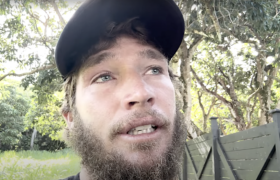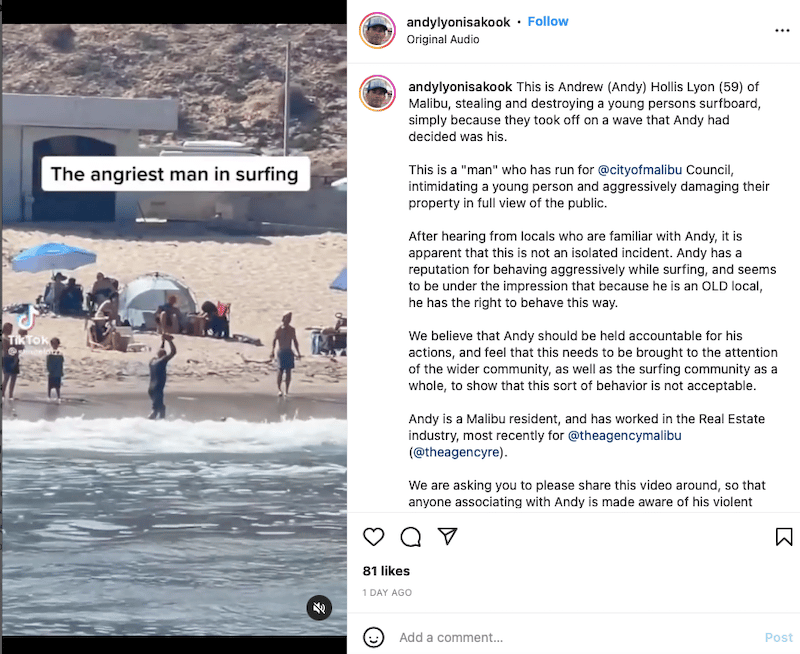Bleak and ugly but is there hope?
Surfing, man. A toxic stew featuring bashed singlefin: yellows, locals onlies, back paddles, angry glares, frustration, rigidnesses of mind, body, style, substance but has it always been so and must it always be? For the intellectually stilted, I suppose status quo rules but a scintillating new essay directly challenges the norm.
Maya Weeks, who describes herself as “a white settler writer, artist, and geographer living and working on unceded yak titʸu titʸu yak tiłhini Northern Chumash land,” which I think is California’s central coast, pulled no punch in smacking us all in the mouth. “Surfing has a reputation for embodying all the most annoying and violent aspects of white masculinity, and for good reason,” she writes before really digging in.
Contrary to its roots as a kānaka maoli (Native Hawaiian) cultural practice, modern surfing as widely distributed by white men has been a font of rugged masculinity, hyperindividualism, and conquering (especially when it comes to big waves). I’m thinking of white locals in my hometown telling visitors “we grew here, you flew here”; of white men stealing the waves of people they don’t know; of the way professional surf contests as late as the 2000s were set up to give women the worst conditions to surf in as well as far-from-equitable prize money; of white American men leasing private islands to capitalize on as surf resorts; of literal surf Nazis. I’m thinking of how in the early 20th century, the Manhattan Beach, California city council used eminent domain to take the land from the Bruces, a Black family. Of how it took the Bruce family nearly a century to recover their land.
Bleak and ugly but is there hope?
Thankfully, yes, as Weeks discusses promising developments such as women getting an equal shot to surf Mavericks even though that contest hasn’t ever run, the lineup becoming more diversified and:
Crucially, since time immemorial, the lands and waters of what is currently called the Central Coast of California have been the home of the yak titʸu titʸu yak tiłhini Northern Chumash Tribe. The proposed Chumash Heritage National Marine Sanctuary will reinstate some Chumash sovereignty over these waters in a protected area that will extend from the Channel Islands National Marine Sanctuary to the Monterey Bay National Marine Sanctuary. Ocean and climate scientist Priya Shukla points out that the sanctuary will not only restore “decision-making power to the original stewards of these natural resources” but also “[elevate] Chumash ‘thrivability’, which values the interconnectedness between the natural marine environment and local human community members.” I can’t wait to surf in it.
Me either except for the cold and angrier-than-completely-necessary elephant seals.






